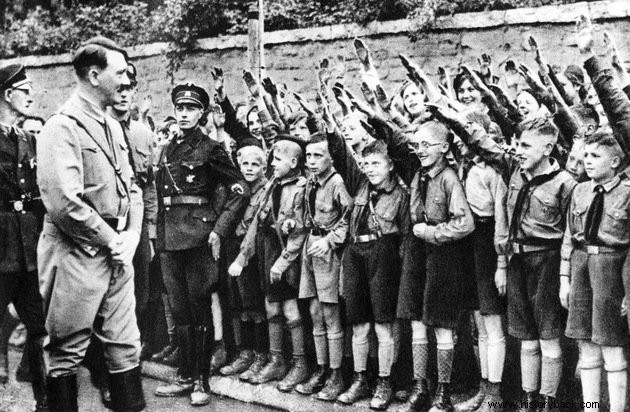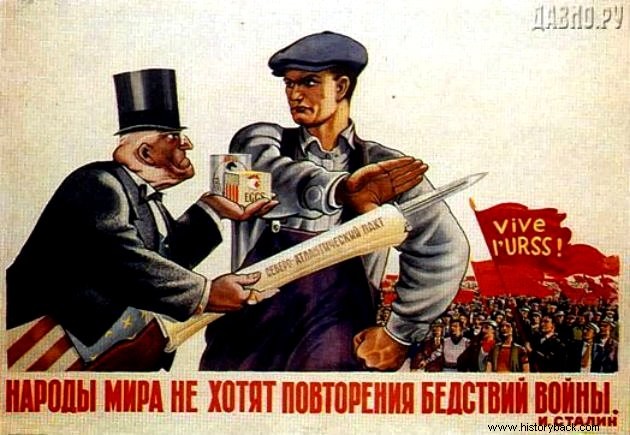The Totalitarianism it is a political regime in which the government is authoritarian, nationalist, undemocratic and militaristic.
The State has enormous powers that cover all sectors of citizens' lives, including education, leisure and the exercise of citizenship.
The term "totalitarianism" emerged in the 1920s to describe the fascist government of Benito Mussolini in Italy.
Summary on Totalitarianism
Totalitarianism, as a political regime, was born in the 20th century, along with the crisis of international capitalism and the liberal democracies that emerged in the interwar period.
It was also reinforced by the deep world economic crisis of 1929. After all, the increase in inflation, unemployment and misery led to the rise of totalitarian ideas that won over the citizens of some countries.
The idea common to fascist totalitarian leaders was to find ways to re-establish the social and capitalist order, thus preventing the advance of socialism. In turn, leftist totalitarian regimes used the same methods to contain capitalism.
So, totalitarianism is a political practice where the State is strong, centralizing, and identifies itself with the ideas of a single political party.
Totalitarian Countries
The most significant examples were:Stalinism, in the Soviet Union; Nazism in Germany; fascism in Italy; and Maoism in China. We see that totalitarianism is therefore independent of whether the government is left or right.
Some regimes were not considered totalitarian but authoritarian, as was the case with Salazarism in Portugal; and Francoism in Spain.
Currently, the only country classified as totalitarian is North Korea.
See also:Totalitarian Regimes in EuropeMain characteristics of totalitarianism
The totalitarian regimes, fascist or socialist, kept certain similarities. Let's take a look at some of them:
Worship of the leader
Totalitarian regimes place a great emphasis on the figure of the leader, to the point of making his image omnipresent.
The leader is always portrayed as the person who has natural leadership and gathers all the qualities to lead the people to better living conditions. The biography is told in grandiose tones and conveniently edited. This means that its opponents are omitted or slandered.
The life of the totalitarian leader is broadcast by all media and shown as an example to be followed. Generally, the leader's family does not appear in the official propaganda, to emphasize the character of sacrifice that the hero commits when he renounces everything for his homeland.
Single party
One of the main features of totalitarianism is the establishment of a single party in the country. This means that all other political parties will be considered illegal.
Thus, through an official ideology and rigid hierarchy, politics is no longer something that can be discussed by the whole society, but only done by a small group.
Citizens are called to participate in political life through mass demonstrations, such as patriotic parties, rallies in stadiums and parades. To achieve this adhesion, people are captured and subjected to government propaganda.
Education
The totalitarian regime takes special care of education. In addition to dictating the content that should be taught in schools, it regulates children and youth in clubs and organizations.
There, children often received military training, instruction in the state's ideology, and swore oaths of allegiance to the leader.

Ideological Control
To control the population, organs of repression such as the political police are created.
Any individual who reads, discusses or propagates an idea different from that taught by the State would be liable to condemnation.
We see, then, that totalitarianism generates violence, since people who do not align themselves with the ideology of the State are severely punished. Some examples are political prisons, re-education camps, loss of political rights and employment.
Militaryism
In order to keep alive the flame of "revolution" or the creation of a "new man", totalitarianism promotes militarism.
Thus, encouraging militarism is a way of keeping the citizenry on alert. These range from educational practices with shooting lessons and physical training, to choosing an enemy that should be hated by everyone.
Militarism generates the will and the excuse to conquer territories or keep those already possessed. Therefore, given these aspects, it is not surprising that all European totalitarian regimes sought to expand their borders.
Propaganda and censorship
State political propaganda proliferates with the aim of exalting the personality of the leader, attracting citizens to the new ideology and controlling them.
The media are censored and only what was authorized by the state could be broadcast. In this way, the population is no longer in contact with new ideas.
Furthermore, totalitarianism exalts the people it addresses as the best in the world and always chooses an "enemy" to oppose. This will be largely exploited by official propaganda.

State interventionism
In the economic field, state interventionism (anti-liberal) is another important characteristic of totalitarianism, since the control and general planning of the economy is in charge of the State.
Countries like Portugal, Italy and Spain organized their economies in a corporate way; while in Germany, large companies had more freedom to conduct their business.
In the USSR, the economy was entirely in the hands of the state, as all property belonged to it.
We have more texts on the subject for you :
- Autocracy
- Fascism
- Nazism
- Stalinism
- Totalitarianism and Authoritarianism
- Totalitarianism
- Integralism
